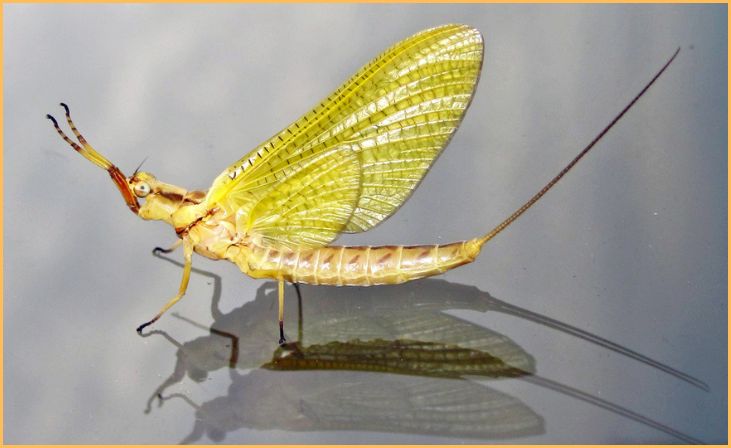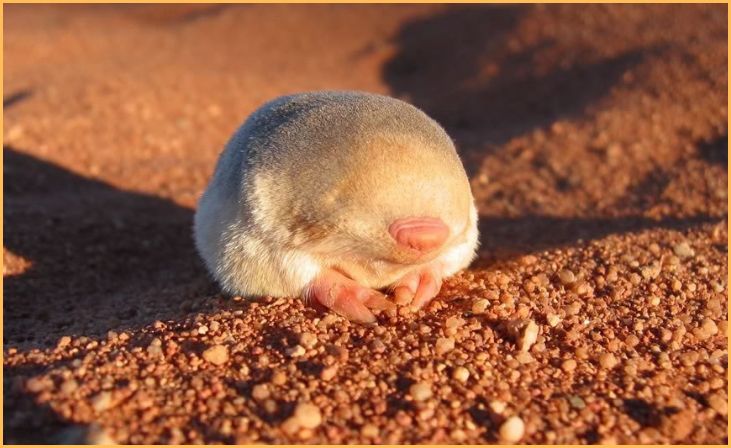Animals With the Shortest Lifespans – In the intricate tapestry of the animal kingdom, lifespans vary dramatically, from enduring creatures with lengthy existences to those with fleeting moments on Earth. This exploration delves into the intriguing realm of animals with remarkably short lifespans, unveiling the diverse strategies employed by various species to navigate their brief timeframes.
From ethereal mayflies that experience the entirety of their existence within a single day to small mammals, birds, and marine life adapting to swift life cycles, these creatures offer a unique perspective on survival, reproduction, and ecological dynamics.
As we unravel the mysteries behind their brief journeys, we gain valuable insights into the evolutionary marvels and environmental influences shaping the captivating world of animals with the shortest lifespans. Join us on a journey through the ephemeral lives of these fascinating beings, where every moment is a testament to the intricate dance of nature’s rhythms.
Fascinating Animals With the Shortest Lifespans
Mayfly (Ephemeroptera)

Mayflies, belonging to the order Ephemeroptera, are renowned for their brief existence. Their lifespan is astonishingly short, spanning from just a few hours to a maximum of a couple of days. Despite their ephemeral existence as adults, mayflies undergo a more prolonged developmental phase as aquatic nymphs.
This short-lived adulthood is primarily dedicated to one crucial purpose: reproduction. Mayflies exhibit a remarkable synchronicity in their emergence, creating swarms that perform essential ecological roles such as serving as a food source for various animals.
Their fleeting yet purposeful presence is a fascinating aspect of their life cycle in freshwater ecosystems around the world.
Also, Read – Rarest Animals in the World
Gastrotrichs
Gastrotrichs, tiny aquatic animals, captivate with their fleeting lives. Measuring only a few millimeters, these microscopic creatures spend their existence in marine and freshwater environments.
Despite their diminutive size, they lead active lives, swiftly moving through water using hair-like structures called cilia. Gastrotrichs exhibit rapid reproduction, with some species completing their entire life cycle within a few days to a few weeks.
Their transient presence in the aquatic realm highlights the diversity of life in microscopic ecosystems and underscores the adaptability of organisms thriving in these often overlooked environments.
Housefly (Musca domestica)
The common housefly, scientifically known as Musca domestica, is a ubiquitous insect with a brief yet impactful lifespan. Typically living for a mere 15 to 30 days, these winged pests undergo rapid development from egg to larva to pupa, thriving in environments rich in decaying organic matter.
Houseflies contribute to ecosystems as decomposers, but their short adult lives are dedicated to mating and laying eggs. Known for their agility in flight and ability to transmit diseases, they play a significant role in various ecological processes while emphasizing the importance of effective pest control in human habitats.
Chameleon (Chamaeleonidae)
Chameleons, belonging to the family Chamaeleonidae, exhibit remarkable adaptability and unique features within a relatively short lifespan. With an average lifespan of 1 to 3 years, these reptiles are known for their distinctive ability to change color for communication, camouflage, and temperature regulation.
Native to various ecosystems, chameleons are primarily arboreal, using their prehensile tails and specialized feet for climbing. Their short lives are often marked by diverse and rapid reproductive activities.
Despite their relatively brief existence, chameleons leave a lasting impression with their intricate adaptations, emphasizing the significance of flexibility and survival strategies in the animal kingdom.
Dragonfly (Odonata)

Dragonflies, members of the order Odonata, embody a short but dynamic life cycle. Spending the majority of their lives as aquatic nymphs, they undergo remarkable transformations before emerging as agile and colorful adults.
The adult dragonfly’s aerial prowess is showcased during its brief stint, which lasts from a few weeks to a few months. This ephemeral phase revolves around reproduction, as they mate in flight and lay eggs in water bodies.
Dragonflies play a vital role in controlling insect populations, showcasing their ecological significance despite their comparatively short-lived adult stage. Their rapid and acrobatic flights make them fascinating denizens of freshwater habitats worldwide.
Also, Read – Small Animals That Make Fantastic Pets
Fruit Fly (Drosophila melanogaster)
The fruit fly, scientifically known as Drosophila melanogaster, is a miniature marvel with a lifespan ranging from 20 to 30 days. Despite their diminutive size, these insects have left an indelible mark in scientific research.
Known for their rapid reproduction and short generation time, fruit flies have been pivotal in genetic studies, providing insights into heredity and development. Their quick life cycle allows researchers to observe multiple generations in a short time, making them valuable models for various biological studies.
Beyond the laboratory, these tiny creatures are common inhabitants of fruit and vegetable environments, where their brief lives contribute to ecosystem processes and nutrient cycling.
Squid (Various species)
Squids, diverse cephalopods found in oceans worldwide, lead lives marked by brevity and adaptation. While lifespans vary among species, many squids live for only 6 months to 5 years.
Known for their intelligence and agility, squids exhibit rapid growth and reproductive rates. Some species engage in semelparity, where individuals spawn once and then succumb. Their short lives are devoted to efficient hunting, communication through chromatophores, and a remarkable capacity for swift, jet-propelled movement.
Squids, with their transient yet impactful presence, contribute to marine ecosystems as both predators and prey, embodying the ephemeral beauty of life beneath the ocean’s surface.
Annual Killifish (Various species)
Annual killifish, comprising various species, are remarkable for their brief and unique life strategy. These fish, typically found in temporary freshwater habitats like seasonal ponds, exhibit an accelerated life cycle. With lifespans ranging from a few weeks to a few months, annual killifish have evolved to cope with unpredictable environments.
They lay drought-resistant eggs that endure dry periods, hatching when water returns. Their rapid growth, early maturation, and quick reproduction contribute to their resilience in dynamic ecosystems.
The annual killifish’s ability to thrive in ephemeral waters highlights the adaptability of certain species to challenging environmental conditions, showcasing nature’s diverse and resourceful solutions.
Marsupial Mole (Notoryctes spp.)

The enigmatic marsupial mole, belonging to the Notoryctes genus, leads a secretive life beneath the arid Australian deserts. With a lifespan ranging from 3 to 6 years, these subterranean mammals have adapted to the harsh conditions by burrowing through the sandy soils.
Their eyes are vestigial, and their ears are covered to prevent sand intrusion, reflecting their specialized lifestyle. Despite being marsupials, they lack a pouch; instead, females have specialized skin folds to protect their young.
Rarely seen and uniquely adapted to their environment, marsupial moles epitomize the fascinating diversity of life in some of the world’s most inhospitable landscapes.
Bamboo (Bambusoideae) – A Plant with Animal-Like Lifespan
Bamboo, a member of the Bambusoideae subfamily, exhibits an intriguing lifecycle reminiscent of certain animals. While not an animal, certain bamboo species showcase a phenomenon known as “gregarious flowering.”
Some bamboo species have exceptionally long lives, with individual plants persisting for several decades. However, these plants exhibit a peculiar behavior wherein they flower, set seeds, and then die simultaneously, often after many years of apparent dormancy.
This synchronized flowering event, occurring once in the plant’s life, is akin to an animal’s single reproductive episode. Bamboo’s unique reproductive strategy underscores the diverse and fascinating ways in which different organisms ensure their species’ continuation within the natural world.
Conclusion
In concluding this exploration of animals with short lifespans, we find nature’s extraordinary adaptations in the face of temporal constraints. From insects to marine life, small mammals, birds, and reptiles, each species has crafted unique strategies to thrive in its fleeting moments.
This study underscores the importance of appreciating the intricate balance between life and time in the animal kingdom.
As we contemplate the brevity of their existence, we gain a deeper understanding of the evolutionary forces that drive survival and the profound interconnectedness of life’s diverse threads. These resilient creatures illuminate the beauty found within the ephemeral tapestry of our natural world.
FAQs
Insects with short lifespans, like mayflies, play crucial roles in nutrient cycling and food webs. Their rapid reproduction provides a food source for other species, contributing to ecosystem dynamics.
Certain fish species, as well as microscopic marine organisms like plankton, have relatively short lifespans. Their adaptability and reproductive strategies are shaped by the dynamic nature of marine environments.
Small mammals often have short lifespans due to predation pressures, limited resources, and a need for rapid population turnover. These factors drive evolutionary adaptations for survival and reproduction.







